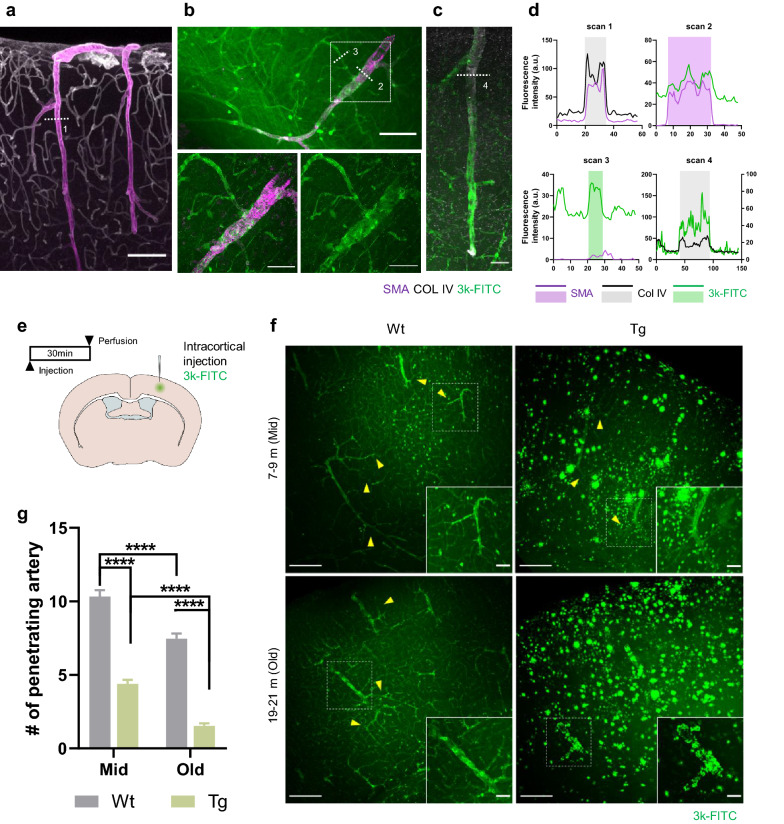Fig. 4.
Early impairment of intramural periarterial drainage and progressive worsening in APP/PS1 mice. a Representative image of the vascular smooth muscle cells (vSMCs) and perivascular basement membrane (BM). vSMCs and BM were identified as smooth muscle actin (SMA) and collagen IV, respectively. Collagen IV shows a continuous cerebrovascular network of arteries, capillaries, and veins. Arteries are costained with SMA and collagen IV. Scale bar = 100 µm. b Representative image of 3 kDa FITC-dextran (3 k-FITC) distribution in the arteries (SMA) and capillaries in the parenchyma after somatosensory injection. The white-dashed box shows that the 3 k-FITC drains into arteries (SMA) and capillaries. c Representative image of 3 k-FITC and the BM (collagen IV). d Intensity profile analysis of the white dotted lines in images (a–c). vSMCs (SMA) are located inside the BM (collagen IV) layer (gray shaded area, top left). Note that 3 k-FITC is attached to the vSMCs, and the spatial distribution of 3 k-FITC is almost identical to the SMA signal (purple shaded area, top right). 3 k-FITC drains into the capillaries and exhibits a spatial distribution similar to that of the blood vessel (green shaded area, bottom left). The spatial distribution of 3 k-FITC is almost identical to that of collagen IV (gray shaded area, bottom right). This indicates the entry and exit of the 3 k-FITC through the BM. e Schematic illustration of intraparenchymal injection and perfusion schedule. f Representative image of the intramural periarterial drainage 3 k-FITC is located around the capillaries (yellow arrowhead) and arteries. Note that 3 k-FITC is rarely observed along the capillary in old Tg. The white-dashed boxes are magnified images of 3 k-FITC distribution around the arteries. Scale bar = 200 µm, 50 µm. g Quantification of the number of arteries with the 3 k-FITC signal. [p < 0.0001 (genotype), p < 0.0001 (age), two-way ANOVA) (mid Wt; n = 5, mid Tg; n = 5, old Wt; n = 6, old Tg; n = 5, 18 slices/mouse)]. All data are presented as the mean ± SEM. **p < 0.01, ***p < 0.001, ****p < 0.0001 two-way ANOVA with Bonferroni’s post hoc test

